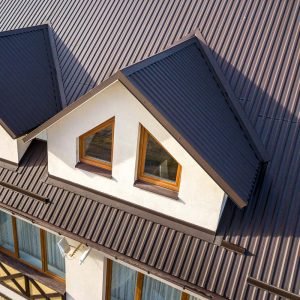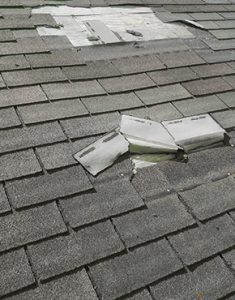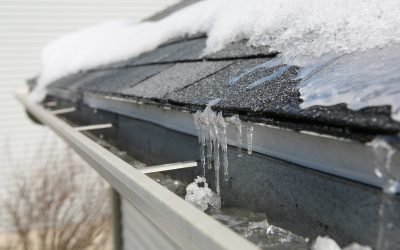How Long Do Roofs Last in Indiana?
Average Lifespan of Roofs in Indiana
To get a clear understanding of how long roofs last in Indiana, you have to look at the average lifespan of different types of roofing systems commonly used in this region.
Asphalt Shingle Roofs
Asphalt shingle roofs are popular across the Hoosier State due to their affordability and easy installation. On average, these roofs can last between 20 and 30 years. However, this lifespan largely depends on the shingle quality, proper installation, and maintenance. High-quality asphalt shingles paired with an efficient gutter system can prolong your roof’s longevity.
Metal Roofs
Metal roofs are another option frequently found in the area. The typical lifespan of a metal roof can range from 40 to 70 years, largely because of its robustness and resistance to weather conditions. Despite being prone to periodic denting and fading, they remain a durable roofing choice that offers longevity.

Metal roofs are very robust and known for it’s resistance against most weather conditions.
Clay or Concrete Tile Roofs
Though more expensive upfront, clay or concrete tile roofs are known for their long-term durability. These types of roofs can last upwards of 50 years, with some even surpassing the 100-year mark. However, they are more sensitive to freeze-thaw cycles common in Indiana’s climate and require proper installation and regular maintenance to reach their potential lifespan.
Wood Shake Roofs
Wood shake roofs provide a natural, rustic aesthetic that many Indiana homeowners appreciate. The lifespan of a wood shake roof typically ranges between 20 and 30 years, but this can extend up to 40 years with proper maintenance. One caveat is that they are more susceptible to rot and insect damage if not adequately treated and cared for.
Please note that while these timelines provide a general guide, the lifespan of your roof can significantly vary due to factors such as the quality of materials, installation, weather conditions, and maintenance. Each roof’s individual circumstances will largely dictate how long it lasts.
Factors Affecting Roof Longevity in Indiana
Beyond just the type of roofing material, several factors can influence how long roofs last.
Climate and Weather Conditions
The weather and climate in Indiana can be harsh, with freezing winters and scorching summers. These extreme conditions can impact the durability of your roof. For instance, asphalt shingles tend to be less resistant to high winds and heavy snowfall, which can shorten their lifespan. On the other hand, metal roofs can withstand severe weather conditions better, but they may suffer from rust and corrosion without proper treatment.
Maintenance and Care
A key component to ensuring a long lifespan for your roof is regular maintenance and care. This includes periodic inspections, prompt repairs of minor damages, and keeping gutters clean to prevent water backups. Regardless of the type of roof, neglecting maintenance can significantly reduce its longevity.
Installation Quality
Lastly, the quality of the roof installation plays a significant role in determining its lifespan. A poorly installed roof, irrespective of the type of material, is likely to face more issues and require more frequent repairs, thus shortening its lifespan.
Signs of Roof Aging and When to Consider Replacement
Knowing when to replace your roof is equally as vital as understanding how long it will last. Regular inspections are very much needed.
Visible Signs of Deterioration
Signs of roof deterioration include water damage, leaks, discoloration, curling or missing shingles, and structural issues such as sagging. If these signs are present, it might be time to consider a roof replacement.

The harsh storms in Indiana can really damage even the most robust roof tiles.
Professional Assessment and Recommendations
A professional assessment is recommended to accurately determine the health of your roof. Roofing experts can identify less visible issues and provide recommendations on repair or replacement.
Maintenance Tips to Extend Roof Lifespan
Regular maintenance is the best way to keep your roof in top condition and extend its lifespan.
Regular Cleaning and Inspections
Keep your roof clean and free of debris. Regular inspections, particularly after severe weather events, can help identify potential problems early.
Repairing Minor Damages Promptly
Promptly repairing minor damages can prevent more severe problems in the future. Never delay necessary repairs, as doing so can lead to substantial damage and costly repairs.
View this post on Instagram
Hiring Professionals for Maintenance
Professional maintenance services are essential to ensuring the structural integrity of your roof. Roofing experts have the skills, knowledge, and tools necessary to offer thorough inspection and maintenance services.
Get Your Roof Checked Today
Understanding how long roofs last in Indiana involves considering several factors, including the type of roofing material, local weather conditions, and maintenance practices. Being aware of these factors, along with recognizing the signs of an aging roof, can help you make informed decisions about roof replacements and maintenance, ultimately leading to a more durable and longer-lasting roof for your home.
Want Your Roof To Last a Lifetime?
Count on Kingdom Roofing Systems to tackle your roofing worries with expertise. Reach out today for reliable solutions, safeguarding your home in any weather and ensuring lasting durability and peace of mind.






